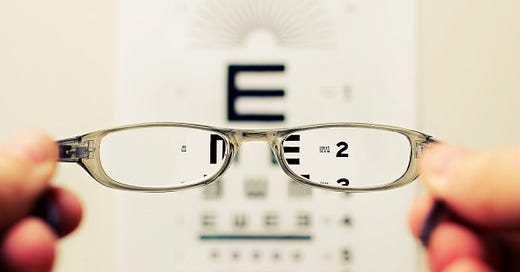The Discipline of Working Backwards
On listening, context, and the quiet work of building meaningful change in healthcare
For over twenty years, I’ve moved through nearly every layer of the healthcare system—from the eager early mornings of surgical training to the quiet, heavy moments in operating rooms and the strategic challenges faced in health system leadership. Along the way, I’ve founded ventures, worked across sectors, and witnessed the extraordinary persistence of healthcare professionals in the face of rising complexity. Through it all, one truth continues to surface: we too often begin in the wrong place.
In an age where innovation moves quickly and technology often drives the agenda, we rush toward solutions before we’ve truly understood the problem. I’ve learned, sometimes the hard way, that meaningful change requires a shift in posture—from building forward, to working backwards.
Working backwards is not a framework. It’s a discipline. It begins with the end in mind—not just any end, but a shared and carefully articulated vision of what we are trying to achieve. It demands that we slow down long enough to ask the right questions before we deploy the tools we’ve grown comfortable with.
When I walk through a hospital—whether as a surgeon, an advisor, or a collaborator—I see more than clinical protocols and performance metrics. I see ecosystems. Each hospital is shaped by its own culture, geography, community, and constraints. Even hospitals serving similar populations or using the same EHR systems can differ dramatically in workflow, communication style, and leadership structures. And yet, many technology solutions are designed as if one context fits all.
This mismatch isn’t just inconvenient—it’s a barrier to progress. Far too often, technology is brought in to “fix” healthcare without a clear understanding of what’s actually broken. I’ve seen well-meaning efforts stall not because the technology was inadequate, but because the implementers didn’t fully grasp the texture of the environment they were stepping into.
Hospital executives and clinical leaders know their terrain well. But even they can feel pressure to accept prepackaged solutions that promise transformation without first building consensus around the goal. That’s where working backwards becomes essential. If a health system wants to improve post-operative recovery, for example, the solution isn’t just to insert a new platform. The starting point is a deeper question: What is truly getting in the way of recovery here, in this place, with these patients and teams?
Sometimes the answer is clinical—delayed imaging, poor discharge coordination, inadequate pain control. Other times, the barriers are social: unstable housing, language access, caregiver fatigue. Often, it’s all of the above. Without naming these layers clearly, we end up chasing symptoms instead of designing for change.
In my own work at the intersection of healthcare and technology, including through ventures like Reveal HealthTech, I’ve come to understand the importance of accompaniment—of walking alongside both hospital teams and technology developers to build not just solutions, but relationships. It’s not enough for tech partners to “support” healthcare. They must become students of it. They must ask better questions, listen deeply, and have the humility to adapt what they’ve built to what’s actually needed.
None of this is theoretical for me. My own approach is shaped by values I strive to live by: justice, equity, unity, and empathy. These aren’t aspirational words. They’re working principles. Without them, technology risks becoming cold, disconnected, and even harmful—amplifying disparities rather than alleviating them. But when solutions are shaped by these values, the impact can be transformative. A tool built with equity in mind doesn’t just scale—it reaches. A system grounded in empathy doesn’t just perform—it builds trust.
We are at a critical moment in healthcare. The demands on clinicians are growing. Resources are finite. Expectations are high. We need innovation, yes—but not at the expense of wisdom. Not at the expense of context. Working backwards doesn’t mean moving slowly. It means moving intentionally. It means aligning action with purpose, and technology with the people it’s meant to serve.
If you’re building in this space—whether you’re a hospital executive, a founder, or a product team—I encourage you to pause and ask: What are we really solving for? Who is this for? What would it mean to do this with, rather than for?
That’s where the work begins. And that’s where the change becomes real.
If this resonates with your work, I’d welcome the conversation.
Dr. Salim Afshar




